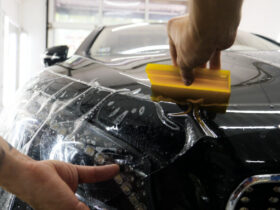Any indoor furniture Poilishing, from hand-finished pieces made of the finest woods to mass-produced wood or plastic veneer, needs periodic cleaning and care with wax or shine. Most waxes and polishes for wood furniture clean and maintain the finish, not the wood. Modern lacquers and other treatments preserve wood so thoroughly that wax or polish rarely penetrates (except for oil-type finishes which are discussed in the paragraphs that follow).
Waxing or polishing regularly improves and prolongs all finishes. Good wax or polish reduces scratching and covers tiny scratches. Chemicals prevent dirt from discoloring and aging Furniture Poilishing. Wax-based polishes are also available. Even professionals and professional furniture finishers disagree (sometimes fiercely) on which is best, although this depends on the finish type and desired results.
Oil-type polishes provide a satiny, less glossy finish, and waxes boost a satiny finish’s luster. Oil polishes form less film than waxes and require less removal over time. Better polishes soften and lift grime, which the rag picks up.
Wax polish dries harder than oil polish. Furniture waxes come in paste, liquid, and spray forms. Some require buffing, while others are high gloss. “Old school” enthusiasts say unpolished wax isn’t as shiny or tough, although top producers disagree. Self-polishing waxes are as durable as buffed waxes. Most furniture waxes soften and remove dirt. Fresh wax softens old wax, which peels off with grime.
Whether oil polish or wax is used, the filth will only be removed if the applicator cloth is rotated regularly to a clean area and discarded when soiled.
Try several waxes and polishes to obtain the optimum gloss and cleaning action. The end determines choice sometimes. Wax-type polishes shouldn’t be used on oil-type finishes (often used on imported teak furniture) or any finish that doesn’t form a firm sealant. Oil-based polishes only?
Most agree that wax shouldn’t be applied over oil finishes. Spreading and cloudiness are hard to cure without removing wax or shine. Modern furniture sometimes has metal, plastic, and other non-wood surfaces, making care challenging. Marble, plastic, leather, and chrome can be polished with a wax-based liquid or spray.
Smeary, hazy, or dirty finishes can be cleaned. Some bonded seams or veneers can be removed with water. Unremoved water can turn certain finishes white. Cleaner polish is recommended. Soak a small area, then wipe. Use a second clean towel to dry it. Mineral spirits, naphtha, or odorless paint thinner can remove wax or polish. Sol-soaked fabric
Press ‘N Sand pads and discs suit all 14-inch power drills, so they’re easy to change. The adhesive-backed discs attach to the pad and allow full pad use. Replaceable. 3M sells $2.90 pads and $1.31 fine or medium discs (coarse comes in four to a package).
Paste removes marble stains. Massaged vent in small portions. Both clothes should be replaced periodically to avoid dragging old dirt and wax onto the surface. Use these solvents in a well-ventilated room to avoid fire.
Remove scratches and burns before rewaxing or polishing. Wax sticks and matching stains can restore scratches. Iodine covers red and brown mahogany scratches. Iodine repairs scratched mahogany. Old brown, fresh crimson. Walnut flesh buffs walnut finishes.
Right: Scraping scorch with a perpendicular knife. Scrape only the burned area. Brush varnish into shallow depressions. Use wax touch-up sticks otherwise.










